The Healthiest Cat Food – 6 Natural and Organic Choices For Your Kitty
Quick Guide
What are the healthiest natural and organic cat foods available?
Although it may seem that all natural and organic foods must be healthy, that’s not always the case! Today, we’ll be going over the characteristics of awesome cat food and listing six of the healthiest natural and organic choices for your kitty.
What, exactly, is natural and organic cat food?
According to FDA guidelines, the “natural” label indicates that the food ingredients of the product haven’t undergone any chemical alterations. It’s a broader label than organic and implies a lower level of regulation.
Because it’s so easy to place a cat food under the “holistic” or “natural” label, it’s important to understand the differences between high and low quality foods in this category. We’ll go over some of the characteristics of a high-quality natural food later.
According to the National Organic Program’s definition, organic products are “produced through approved methods that integrate cultural, biological and mechanical practices that foster cycling of resources, promote ecological balance and conserve biodiversity. Synthetic fertilizers, sewage sludge, irradiation and genetic engineering may not be used.”
Not all natural and organic brands are equal, however, so it’s important to do your research and identify what’s superior and what’s a gimmick.
Quick Look : Top 7 Healthy Cat Foods
| Dry Food | Price | Quality | Rating |
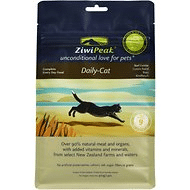 Ziwi Peak Air-Dried Beef Cat Food Ziwi Peak Air-Dried Beef Cat FoodRead Reviews | $20.35/lb |  |  |
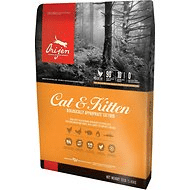 Orijen Cat & Kitten Grain-Free Dry Cat Food Orijen Cat & Kitten Grain-Free Dry Cat FoodRead Reviews | $4.91/lb |  |  |
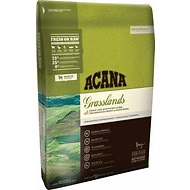 ACANA Grasslands Regional Formula Grain-Free Dry Cat & Kitten Food ACANA Grasslands Regional Formula Grain-Free Dry Cat & Kitten FoodRead Reviews | $4.08/lb |  |  |
| Wet Food | Price | Quality | Rating |
 Smalls Fresh Smooth Bird Recipe Smalls Fresh Smooth Bird RecipeRead Reviews | Varies |  |  |
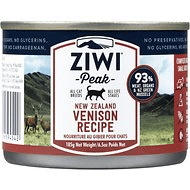 ZiwiPeak Daily-Cat Cuisine Venison Canned Cat Food ZiwiPeak Daily-Cat Cuisine Venison Canned Cat FoodRead Reviews | $4.31/6.5 oz can |  |  |
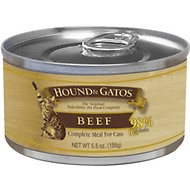 Hound & Gatos Beef Formula Canned Cat Food Hound & Gatos Beef Formula Canned Cat FoodRead Reviews | $1.41/5.5 oz can |  |  |
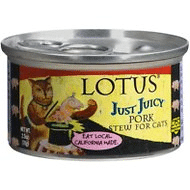 Lotus Just Juicy Pork Stew Grain-Free Canned Cat Food Lotus Just Juicy Pork Stew Grain-Free Canned Cat FoodRead Reviews | $1.89/2.5 oz can |  |  |
Why feed natural foods?
In general, natural foods tend to have clearer labeling, use whole ingredients, and offer more information about how those ingredients are sourced. This means that with a high-quality cat food, you’ll know exactly what you’re putting into your cat’s body. If you choose the right natural cat food, you won’t have to worry about your cat ingesting GMOs or artificial dyes, flavors, and preservatives.
How are the above ingredients harmful? Let’s take a look:
GMOs
Genetically modified ingredients can be difficult to avoid: the FDA doesn’t require that food products disclose the presence of these ingredients. To date, there’s little conclusive evidence that genetically modified ingredients are harmful for cats, but studies have shown that consumption of genetically modified corn resulted in organ disease in rats.
Artificial colors
While the FDA has failed to come to a conclusion about the effects of infamous red dye #40 and yellow #5 on the behavior of children, there’s plenty of anecdotal and scientific evidence suggesting a correlation. These dyes, along with numerous others that are found in conventional cat food, have been linked to countless health issues in both humans and pets and many have been banned in multiple European countries.
Artificial flavors
Usually made from enzymatically liquefied or hydrolyzed animal tissue, artificial flavors are typically sprayed on the food to make it more appealing. This spray is made from by-products, so you don’t know exactly what your cat is eating. As a rule, we’ve disqualified any food containing meat by-products from our list of the top 6 best natural and organic foods for cats.
Artificial preservatives
Many conventional cat foods are treated with preservatives like Ethoxyquin, BHA, and BHT, chemicals that have been linked to organ disease, cancer, and skin problems.
7 criteria for choosing the healthiest natural and organic cat foods
Let’s establish a criteria for the healthiest foods in the natural and organic space. Here’s what we’re looking for:
1. No by-products or vague labeling.
Some cat food labels refer to vague, non-specific protein sources such as the following:
- Meat
- Meat by-products
- Meat meal
- Poultry
- Poultry by-products
- Poultry meal
A note on by-products
Let’s take a look at the AAFCO (Association of American Feed Control Officials) definitions of by-products for pet food:
Meat by-products
“Meat by-products is the non-rendered, clean parts, other than meat, derived from slaughtered mammals. It includes, but is not limited to, lungs, spleen, kidneys, brain, livers, blood, bone, partially de-fatted low temperature fatty tissue, and stomachs and intestines freed of their contents. It does not include hair, horns, teeth and hoofs. It shall be suitable for use in animal feed. If it bears a name descriptive of its kind, it must correspond thereto.”
Poultry by-products
“Poultry By-Products must consist of non-rendered clean parts of carcasses of slaughtered poultry such as heads, feet, viscera, free from fecal content and foreign matter except in such trace amounts as might occur unavoidably in good factory practice. If the product bears a name descriptive of its kind, it must correspond thereto.”
Some of these carcass parts fall into the category of low quality protein – protein that’s difficult for your cat to digest. Of course, it’s not all bad – the organs included in meat by-products are beneficial for your cat, if provided in balanced quantities. But that’s not enough to justify everything else that may come in those by-products.
If your cat suffers from food allergies, this type of labeling doesn’t help you with avoiding those allergens. You don’t know what percentage of the food’s protein content is digestible and how much is from a sub-optimal protein source.
It’s far better to look for whole protein sources rather than simply “by-products” – these are reliably high-quality and you’ll know exactly what’s going into your cat’s body.
2. Clear labeling
Ideally, you’re looking for clear, specific labeling that indicates exactly what the food contains. Higher-quality foods have labeling that describes the contents clearly. For example, you might see that a certain food contains chicken, ground chicken bones, and chicken kidneys.
3. Grain-free with minimal plant protein
As obligate carnivores, cats have great difficulty processing plant protein.
High quality protein sources, like those from whole meats, are ideal for our cats – they’re what they’re made to consume. Low protein sources such as those from plants, including grains, have limited digestibility. This means that while your cat’s food may appear to be high in protein, that protein is only partially metabolized by your cat’s body. These low quality proteins can be stressful to your cat’s organs, particularly the kidneys.
4. Low in carbohydrates
Many natural cat foods eliminate grains and replace them with other high-carbohydrate plant matter that isn’t really a natural part of your carnivorous cat’s diet. This is usually in an effort to keep costs low while boosting volume and protein content, but also has other uses. The use of fruits and vegetables is particularly common in the case of dry food, which requires a certain amount of plant matter to bind the kibble. Some other fruits and vegetables may be added in as a source of extra nutrients and fiber.
While cats can digest carbohydrates in small quantities, they really aren’t that great at it, so it’s important to maintain a balance. Especially if your cat suffers from diabetes, it’s critical to keep carbs to a minimum.
5. No carrageenan
Carrageenan is a natural thickening agent from red algae or seaweed, so some natural pet food manufacturers may include it despite its bad reputation. Thanks to decades of research on its potentially harmful effects, carrageenan has been shown to accelerate cancer formation when consumed alongside a carcinogen, and there’s evidence that it can create inflammation in the body. Especially in the case of wet food, which may use the ingredient as a gravy thickener, it’s important to check the labels to ensure that the food doesn’t contain carrageenan.
6. From a company that hasn’t had a recall in the last 5 years
It’s important to make sure that our cats’ food comes from a reliable, safe source. While recalls do happen, sometimes to the best brands, we’ve selected only foods from companies that haven’t had recalls in the last 5 years. This gives us a good idea of the quality of products they produce.
7. Cats and people alike love it
By looking at reviews from consumers, we’ve identified foods that people and cats alike seem to love based on flavor, odor, and health effects.
Using this criteria, I’ve selected six of the absolute best natural and organic foods for your cat. All of the following foods are by-product free, feature primarily real meat protein, and come from great brands that haven’t been recalled in the last five years, making them solid choices for your cat.
Our Recommendation for the 6 Healthiest Cat Foods
Best Natural and Organic Dry Foods for Cats
Ziwi Peak Air-Dried Beef Cat Food

Ziwi Peak cat food is made from only the highest-quality meats, ethically sourced from New Zealand ranches. All of their foods are absolutely free of GMOs, artificial dyes, colors, and preservatives. Ziwi Peak air-dried cat food starts with fresh meat and seafood that undergoes a gentle twin-stage air drying process to lock nutrients in and bacteria out. – Buy It
First 5 Ingredients:
Beef – Meat (includes up to 3% finely ground bone), Beef – Liver, Lung, Tripe, New Zealand Green-Lipped Mussel
Pros
- Single-sourced beef is free-range and grass fed on local New Zealand ranches
- 98% fresh meat, organs, bones and mussels, which are a natural source of glucosamine and chondroitin for joint health
- Grain-free with no corn, soy, or wheat
- Air-preserved meat is nutritionally complete and safe for you and your cat
Cons
- Dry food alone doesn’t provide adequate hydration
Orijen Cat & Kitten Grain-Free Dry Cat Food

Orijen cat food offers 85-90% meat. ⅔ of these meats are fresh, meaning that they’re fresh with no preservatives, or raw – flash frozen with no preservatives. ⅓ of these meats are dehydrated chicken and turkey. This concentration of nutritionally intact meat makes Orijen an easy way to offer your cat something close to their ancestral whole prey diet. All ingredients are GMO-free and ethically and sustainably produced by farms, fishermen, and ranches in the United States. None of the ingredients have been treated with chemical preservatives. – Buy It
First 5 Ingredients:
Deboned Chicken, Deboned Turkey, Yellowtail Flounder, Whole Eggs, Whole Atlantic Mackerel
Pros
- 40% protein and 20% low-glycemic carbohydrates
- Made from free-run chicken and turkey and wild-caught fish
- No rendered poultry meal
- No corn, soy, or wheat – grain free
- Infused with freeze-dried liver for added flavor
Cons
- Dry food alone doesn’t provide adequate hydration
ACANA Grasslands Regional Formula Grain-Free Dry Cat & Kitten Food

Acana is a line of cat food containing 50-75% meat, produced by the same company behind Orijen. Sitting at a slightly lower price point than Orijen products, this food is accessible to a larger consumer group. All ingredients are GMO-free and ethically and sustainably produced by farms, fishermen, and ranches in the United States. None of their ingredients have been treated with chemical preservatives. The Grasslands formula is made from regional ingredients and includes 75% premium fresh meat, egg, organs, and cartilage. – Buy It
First 5 Ingredients:
Deboned Lamb, Deboned Duck, Whole Eggs, Lamb Meal, Catfish Meal
Pros
- Made in the USA from carefully sourced regional ingredients
- No corn, wheat, or soy – grain-free
- No plant protein concentrates
- Infused with freeze-dried lamb liver for added flavor
- While many other foods contain chicken, Acana Grasslands Regional Formula doesn’t, making it a good choice for cats who are allergic to chicken
Cons
- Dry food alone doesn’t provide adequate hydration
- Less meat content than the other dry choices on this list
Top 4 Healthiest Natural and Organic Wet Foods
| Food | Price | Quality | Rating |
 Smalls Smooth Bird Human-Grade Food Smalls Smooth Bird Human-Grade FoodRead Reviews | Varies |  |  |
 ZiwiPeak Daily-Cat Cuisine Venison Canned Cat Food ZiwiPeak Daily-Cat Cuisine Venison Canned Cat FoodRead Reviews | $4.31/6.5 oz can |  |  |
 Hound & Gatos Beef Formula Canned Cat Food Hound & Gatos Beef Formula Canned Cat FoodRead Reviews | $1.41/5.5 oz can |  |  |
 Lotus Just Juicy Pork Stew Grain-Free Canned Cat Food Lotus Just Juicy Pork Stew Grain-Free Canned Cat FoodRead Reviews | $1.89/2.5 oz can |  |  |
Smalls for Smalls Fresh Chicken Pate
Rating: 5 out of 5 stars

First 5 Ingredients:
Chicken Thigh, Chicken Breast, Chicken Liver, Green Beans, Peas
Smalls for Smalls recipes have high protein content because cats are primarily carnivores and get most of their nutrition from meat. Cat owners also love that Smalls for Smalls recipes have a high water content, because cats get a lot of their hydration directly from their food. Smalls for Smalls foods mean more energy, a healthier coat, and a less fragrant litter box for your cat. Not to mention, the food is delivered right to your doorstep. It doesn’t get much more convenient than that.
Smalls for Smalls says that if the ingredients wouldn’t be good enough for humans to eat, then they don’t deem it good enough for your cat, either–something you can feel great about! They gently cook all their recipes so the nutrition is locked in, and the benefits are numerous. – Buy It
Pros
- Fresh ingredients
- Human-grade
- High protein
Cons
- Subscription service
ZiwiPeak Daily-Cat Cuisine Venison Canned Cat Food

This hydrating cat food is 93% meat, organs, and bone from non-rendered venison, 3% green-lipped mussel for natural glucosamine and chondroitin, and 7% tripe for added palatability. Like all Ziwi Peak products, it is absolutely free of GMOs, artificial dyes, colors, and preservatives. All ingredients are ethically sourced on New Zealand ranches and waters. – Buy It
First 5 Ingredients:
Venison Broth, Venison Meat, Venison Heart, Venison Liver, Venison Lung
Pros
- Grain free with absolutely no corn, soy, or wheat
- Made with fresh meat, organs, and finely ground bones for whole-prey style complete meat nutrition
- Includes New Zealand green-lipped mussels, which are a natural source of glucosamine and chondroitin for joint health
- Rich in moisture and real meat protein
Cons
- A fairly expensive canned food
- The formula was recently changed, making it unappetizing to some cats
Hound & Gatos Beef Formula Canned Cat Food

Hound & Gatos Pet Food Company is committed to a paleolithic pet diet made from 100% meat protein with absolutely no grains. All of their foods are free from artificial flavors, colors, and preservatives. With a single source of real meat protein and absolutely no plant protein, this is an ideal choice for cats with sensitive stomachs and food allergies. All of Hound & Gatos’ ingredients are USA sourced except for their New Zealand lamb. – Buy It
First 5 Ingredients:
Beef, Beef Broth, Agar-agar, Tricalcium Phosphate, Potassium Chloride
Pros
- Absolutely no plant protein
- Single-source protein is perfect for cats with food allergies
- Grain-free with no corn, soy, or wheat
- 98% beef plus added vitamins and minerals
Cons
- A divisive food: some cats love it, others are completely disinterested
- Again, this one isn’t necessarily a con. This product contains agar-agar, which is a thickening agent made from red algae or seaweed. Because of its similarity to carrageenan, it’s sometimes a controversial ingredient. That said, agar-agar hasn’t shown any of the negative health effects associated with carrageenan and is rich in nutrients.
Lotus Just Juicy Pork Stew Grain-Free Canned Cat Food

For cats who love shredded meat in gravy, this food offers a juicy shredded pork meal. All Lotus cat foods are made with ingredients sourced in North America and Canada, except for their green-lipped mussels, deboned lamb, and lamb meal, which come from New Zealand. None of these ingredients have been treated with chemical preservatives. All of their canned foods are hand-packed in their California facility. – Buy It
First 5 Ingredients:
Pork, Pork Broth, Potato Starch, Calcium Lactate, Carrots
Pros
- Grain free with no corn, soy, or wheat
- High in real meat protein
- Packed in the USA
- Includes supplemental vitamin E
Cons
- Lotus Just Juicy contains agar-agar, which is a thickening agent made from red algae or seaweed. Because of its similarity to carrageenan, it’s sometimes a controversial ingredient. Agar-agar hasn’t shown any of the negative health effects associated with carrageenan and is rich in nutrients. This one is halfway between a pro and a con.
- Canned foods made with gravy may be too high-carbohydrate for some cats, as they require starch for thickening.
Now it’s time for you to find the healthiest natural and organic foods for your cat.
Even natural and organic foods can have their flaws: some use plant protein to cheaply boost the protein percentages, some use clever marketing to make fillers sound like benefits, and others just don’t appeal to cats. Other foods, though, are great choices, made with ethically sourced, wholesome ingredients that taste great and deliver a powerful nutritional punch.
When it comes to choosing the right food for your cat, though, it ultimately comes down to finding what your cat likes.
Every cat is different, varying in taste preferences, medical conditions, and lifestyles. Whether your cat is diabetic, on a limited-ingredient diet, or refuses to eat anything but cheap kibble, it goes without saying that it’s important to take your cat’s needs into consideration when choosing a new food. It will probably take some experimenting and more research to find the right food for your cat’s unique set of needs.
Remember that because many cats have difficulty adapting to new foods, it’s recommended that you slowly incorporate any new food into your cat’s original diet rather than pushing a new food on them suddenly, particularly if your cat’s been living off of one food for a long time.











My vet suggested a Senior car formula low in protein and salt…help…! What do I get…..??
Good question, Ixora.
I’m not a veterinarian and can’t give you medical advice. Your cat’s situation is unique and your veterinarian knows more about their individual needs. Generally speaking, however, here’s what we know about senior cats and limited protein diets:
This type of diet is often recommended to cats who have or at risk of developing kidney disease. While not all experts agree on the details, research has shown that a low waste, limited protein diet can help prolong renal function – which is critical when kidney failure is so common in aging cats.
In healthy cats of all ages, animal protein is efficiently metabolized and is an important part of their diet. Plant protein, on the other hand, can be detrimental to your cat’s organ health over the long term. Your cat can’t properly process this type of protein, making it high-waste and thus hard on the organs.
Ultimately, cats are obligate carnivores who need plenty of animal protein to stay healthy. Senior cats have even higher protein requirements than younger cats do – increased protein helps to fight against the natural loss of muscle mass that accompanies the aging process.
Here’s a good article about the importance of protein for senior cats: http://feline-nutrition.org/nutrition/dont-let-your-senior-cat-become-a-skinny-old-kitty
Hope this helped!
I’m surprised you don’t mention Halo pet food as a recommended brand. They are whole meat, no meat meals & use non gmo vegetables. Check them out!
The fact that there are no GMOs in some of the cat food that is reviewed on this site is a super plus sign for anyone who is looking for non-GMO cat food; however, when the label says there is no GMO, does that include the food that is used as the source for the cat food?
Concerning non-GMO food for cats, the elephant-in-the-room question is: what did the source of the food that is fed to cats eat; i.e., are the pigs, chickens, and turkeys fed NON-GMO?
Unless this question is answered, we do not really know if the cat food is truly “non-GMO” : i.e., the food that is sourced for cat food was fed non-GMO while it was being raised.
I would absolutely LOVE a manufacturer to get on-board with NO FISH/FISH OIL (including salmon oil, kelp, etc.) in dry cat food AND wet cat food. I have one cat (of my four!) who is severely allergic to fish and after doing research, I find out cats were desert animals who didn’t used to eat fish. Now why does EVERYONE (and I mean – everyone – after finding only 2 brands of dry food that does not have some fish in it but yet is grain-free and high quality) put fish or fish oil in their food??? I believe fish allergies may be more common than people even realize, due to the prevalence of oceanic protein in our cat food. And while I adore Stella & Chewys, a $40 bag for 18 oz goes in about 2 days with my four cats.